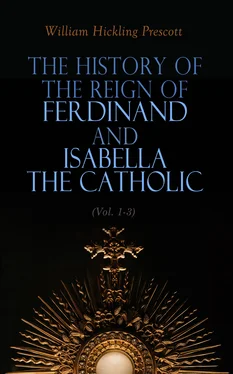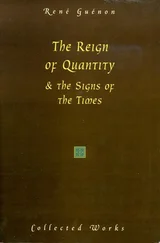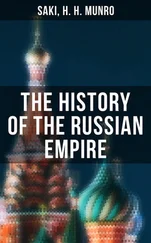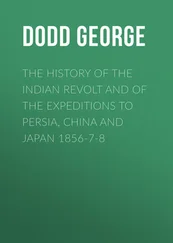[22] In one of the Paston letters, we find the notice of a Spanish knight appearing at the court of Henry VI., "wyth a Kercheff of Plesaunce iwrapped aboute hys arme, the gwych Knight," says the writer, "wyl renne a cours wyth a sharpe spere for his sou'eyn lady sake." (Fenn, Original Letters, (1787,) vol. i. p. 6.) The practice of using sharp spears, instead of the guarded and blunted weapons usual in the tournament, seems to have been affected by the chivalrous nobles of Castile; many of whom, says the chronicle of Juan II., lost their lives from this circumstance, in the splendid tourney given in honor of the nuptials of Blanche of Navarre and Henry, son of John II. (Crónica de D. Juan II., (Valencia, 1779,) p. 411.) Monstrelet records the adventures of a Spanish cavalier, who "travelled all the way to the court of Burgundy to seek honor and reverence" by his feats of arms. His antagonist was the Lord of Chargny; on the second day they fought with battle-axes, and "the Castilian attracted general admiration, by his uncommon daring in fighting with his visor up." Chroniques, (Paris, 1595,) tom. ii. p. 109.
[23] The Venetian ambassador, Navagiero, speaking of the manners of the Castilian nobles, in Charles V.'s time, remarks somewhat bluntly, that, "if their power were equal to their pride, the whole world would not be able to withstand them." Viaggio fatto in Spagna et in Francia, (Vinegia, 1563,) fol. 10.
[24] The most ancient of these regular charters of incorporation, now extant, was granted by Alfonso V., in 1020, to the city of Leon and its territory. (Mariana rejects those of an earlier date, adduced by Asso and Manuel and other writers. Ensayo Histórico-Crítico, sobre la Antigua Legislation de Castilla, (Madrid, 1808,) pp. 80–82.) It preceded, by a long interval, those granted to the burgesses in other parts of Europe, with the exception, perhaps, of Italy; where several of the cities, as Milan, Pavia, and Pisa, seem early in the eleventh century to have exercised some of the functions of independent states. But the extent of municipal immunities conceded to, or rather assumed by, the Italian cities at this early period, is very equivocal; for their indefatigable antiquarian confesses that all, or nearly all their archives, previous to the time of Frederick I., (the latter part of the twelfth century,) had perished amid their frequent civil convulsions. (See the subject in detail, in Muratori, Dissertazioni sopra le Antichità Italiane, (Napoli, 1752,) dissert. 45.) Acts of enfranchisement became frequent in Spain during the eleventh century; several of which are preserved, and exhibit, with sufficient precision, the nature of the privileges accorded to the inhabitants.—Robertson, who wrote when the constitutional antiquities of Castile had been but slightly investigated, would seem to have little authority, therefore, for deriving the establishment of communities from Italy, and still less for tracing their progress through France and Germany to Spain. See his History of the Reign of the Emperor Charles V, (London, 1796,) vol. i. pp. 29, 30.
[25] For this account of the ancient polity of the Castilian cities, the reader is referred to Sempere, Histoire des Cortès d'Espagne, (Bordeaux, 1815,) and Marina's valuable works, Ensayo Histórico-Crítico sobre la Antigua Legislacion de Camilla, (Nos. 160–196,) and Teoría de las Cortes, (Madrid, 1813, part. 2, cap. 21–23,) where the meagre outline given above is filled up with copious illustration.
[26] The independence of the Lombard cities had been sacrificed, according to the admission of their enthusiastic historian, about the middle of the thirteenth century. Sismondi, Histoire des Républiques Italiennes du Moyen-Age, (Paris, 1818,) ch. 20.
[27] Or in 1160, according to the Corónica General, (part. 4, fol. 344, 345,) where the fact is mentioned; Mariana refers this celebration of cortes to 1170, (Hist. de España, lib. 11, cap. 2;) but Ferreras, who often rectifies the chronological inaccuracies of his predecessor, fixes it in 1169. (Hist. d'Espagne, tom. iii. p. 484) Neither of these authors notices the presence of the commons in this assembly; although the phrase used by the Chronicle, los cibdadanos , is perfectly unequivocal.
[28] Capmany, Práctica y Estilo de Celebrar Cortes en Aragon, Cataluña, y Valencia, (Madrid, 1821,) pp. 230, 231.—Whether the convocation of the third estate to the national councils proceeded from politic calculation in the sovereign, or was in a manner forced on him by the growing power and importance of the cities, it is now too late to inquire. It is nearly as difficult to settle on what principles the selection of cities to be represented depended. Marina asserts, that every great town and community was entitled to a seat in the legislature, from the time of receiving its municipal charter from the sovereign, (Teoría, tom. i. p. 138;) and Sempere agrees, that this right became general, from the first, to all who chose to avail themselves of it. (Histoire des Cortès, p. 56.) The right, probably, was not much insisted on by the smaller and poorer places, which, from the charges it involved, felt it often, no doubt, less of a boon than a burden. This, we know, was the case in England.
[29] It was an evil of scarcely less magnitude, that contested elections were settled by the crown. (Capmany, Práctica y Estilo, p. 231.) The latter of these practices, and, indeed, the former to a certain extent, are to be met with in English history.
[30] Marina leaves this point in some obscurity. (Teoría, tom. i. cap. 28.) Indeed, there seems to have been some irregularity in the parliamentary usages themselves. From minutes of a meeting of cortes at Toledo, in 1538, too soon for any material innovation on the ancient practice, we find the three estates sitting in separate chambers, from the very commencement to the close of the session. See the account drawn up by the count of Coruña, apud Capmany, Práctica y Estilo, pp. 240 et seq.
[31] This, however, so contrary to the analogy of other European governments, is expressly contradicted by the declaration of the nobles, at the cortes of Toledo, in 1538. "Oida esta respuesta se dijo, que pues S. M. habia dicho que no eran Córtes ni habia Brazos, no podian tratar cosa alguna, que ellos sin procuradores, y los procuradores sin ellos, no seria válido lo que hicieren. " Relacion del Conde de Coruña, apud Capmany, Práctica y Estilo, p. 247.
[32] This omission of the privileged orders was almost uniform under Charles V. and his successors. But it would be unfair to seek for constitutional precedent in the usages of a government, whose avowed policy was altogether subversive of the constitution.
[33] During the famous war of the Comunidades , under Charles V. For the preceding paragraph consult Marina, (Teoría, part. 1, cap. 10, 20, 26, 29,) and Capmany. (Práctica y Estilo, pp. 220–250.) The municipalities of Castile seem to have reposed but a very limited confidence in their delegates, whom they furnished with instructions, to which they were bound to conform themselves literally. See Marina, Teoría, part. 1, cap. 23.
[34] The term "fundamental principle" is fully authorized by the existence of repeated enactments to this effect. Sempere, who admits the "usage," objects to the phrase "fundamental law," on the ground that these acts were specific, not general, in their character. Histoire des Cortès, p. 254.
[35] "Los Reyes en nuestros Reynos progenitores establecieron por leyes, y ordenanças fechas en Cortes, que no se echassen, ni repartiessen ningunos pechos, seruicios, pedidos, ni monedas, ni otros tributes nueuos, especial, ni generalmente en todos nuestros Reynos, sin que primeramente sean llamados à Cortes los procuradores de todas las Ciudades, y villas de nuestros Reynos, y sean otorgados por los dichos procuradores que á las Cortes vinieren." (Recopilacion de las Leyes, (Madrid, 1640,) tom. ii. fol. 124.) This law, passed under Alfonso XI., was confirmed by John II., Henry III., and Charles V.
Читать дальше












